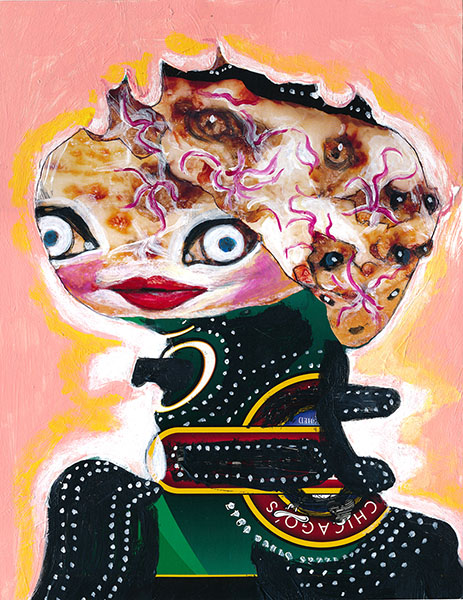Paul Lamantia (born 1938) is an American visual artist, known for charged, visceral paintings and drawings that explore dark, psychosexual imagery. He studied at the School of the Art Institute of Chicago and emerged in the 1960s and 1970s as part of a larger group of artists including the Chicago Imagists, that gained international attention for work combining strategies from Surrealism, abject popular culture and Outsider art. Lamantia also draws inspiration from Expressionism, High Renaissance and Baroque art, and psychoanalytic theories of the unconscious.He has been recognized with retrospectives at the Koehnline Museum of Art (2016), Loyola University (2002), and the Hyde Park Art Center (1982), early attention from Jean Dubuffet, and numerous reviews in national art publications and major newspapers. Lamantia’s work appeared in multiple major group shows at the Art Institute of Chicago and Museum of Contemporary Art, Chicago and sits in their permanent collections, as well as in those of the Smithsonian American Art Museum, and Milwaukee Art Museum, among many. Lamantia continues to live and work in Chicago.
Lamantia’s work often depicts surreal, distorted figures in startling, transgressive scenarios, which he renders in a dizzying tangle of patterns, frenzied line and high-key color while maintaining a strong formal and structural integrity. Critic Dennis Adrian called Lamantia “a Chicago maverick” of the semi-underground, whose work “challenges and wrenches the current broad limits of acceptability and ‘taste.’” Franz Schulze described him as “possibly the most brutal and coldly expressionist” figurative artist of his generation, producing work that was compelling for “all the obsessiveness of its subject matter.” Art historian Robert Cozzolino, suggests that the power of Lamantia’s work derives from its ability to imply multiple meanings—allegories of lust, confessional hallucinations about sexual anxiety, visions from an altered state—that rarely resolve into easy answers.

